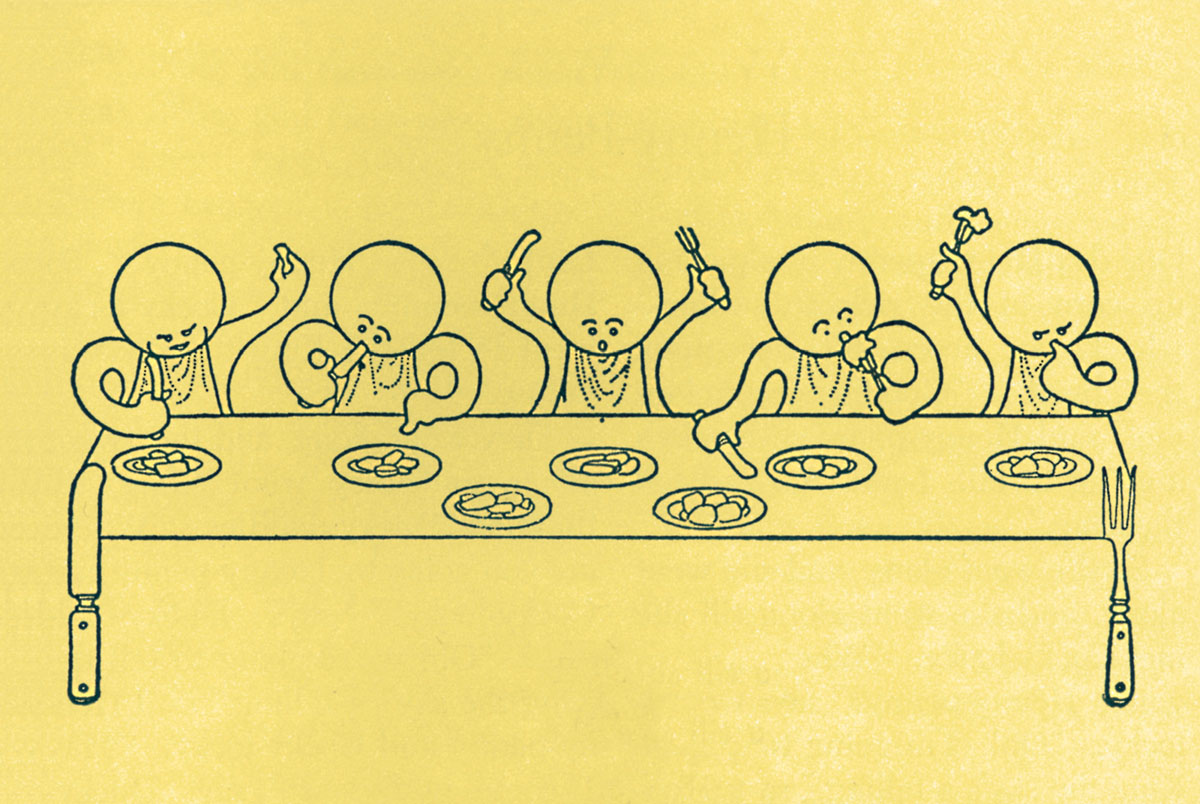Ingestion / Food Games
Setting the table for play
Allen S. Weiss
“Ingestion” is a column that explores food within a framework informed by aesthetics, history, and philosophy.
See Daniel Spoerri, “La faim du C.N.A.C.,” in Allen S. Weiss, ed., Taste, Nostalgia (New York: Lusitania Press, 1997).
See Daniel Spoerri, Topographie anecdotée du hasard [1962] (Paris: Centre Georges Pompidou, 1990).

See the Iron Chef television show as a possible model.
See the description of the suckling pig stuffed with live thrush in Petronius’s Satyricon.
See Joris-Karl Huysmans, À rebours [1891] (Paris: Gallimard / Folio, 1977).
See David Freedberg, The Power of Images (Chicago: University of Chicago Press, 1989).
See Carolin C. Young, Apples of Gold in Settings of Silver (New York: Simon & Schuster, 2002).
Use any recipe from any cookbook whatsoever, decomposing the chosen dish into at least three separate components.
See Antonin Carême, Le pâtissier pittoresque [1815] (Paris: Mercure de France, 2003).
The references are intended as interferences or overtures, not as examples or exemplifications.
Allen S. Weiss, editor-at-large at Cabinet, is the author of many books, including Feast and Folly: Cuisine, Intoxication, and the Poetics of the Sublime (SUNY) and Breathless: Sound Recording, Disembodiment, and the Transformation of Lyrical Nostalgia (Wesleyan).